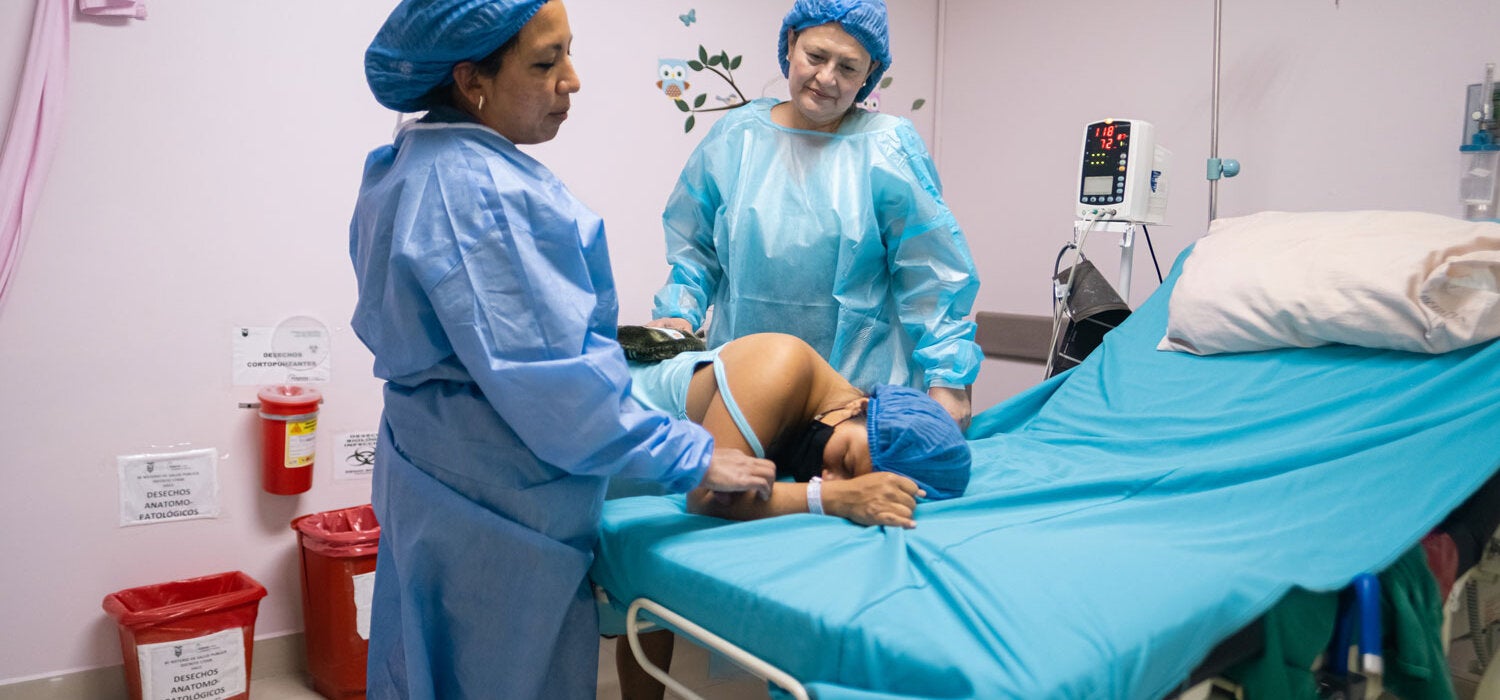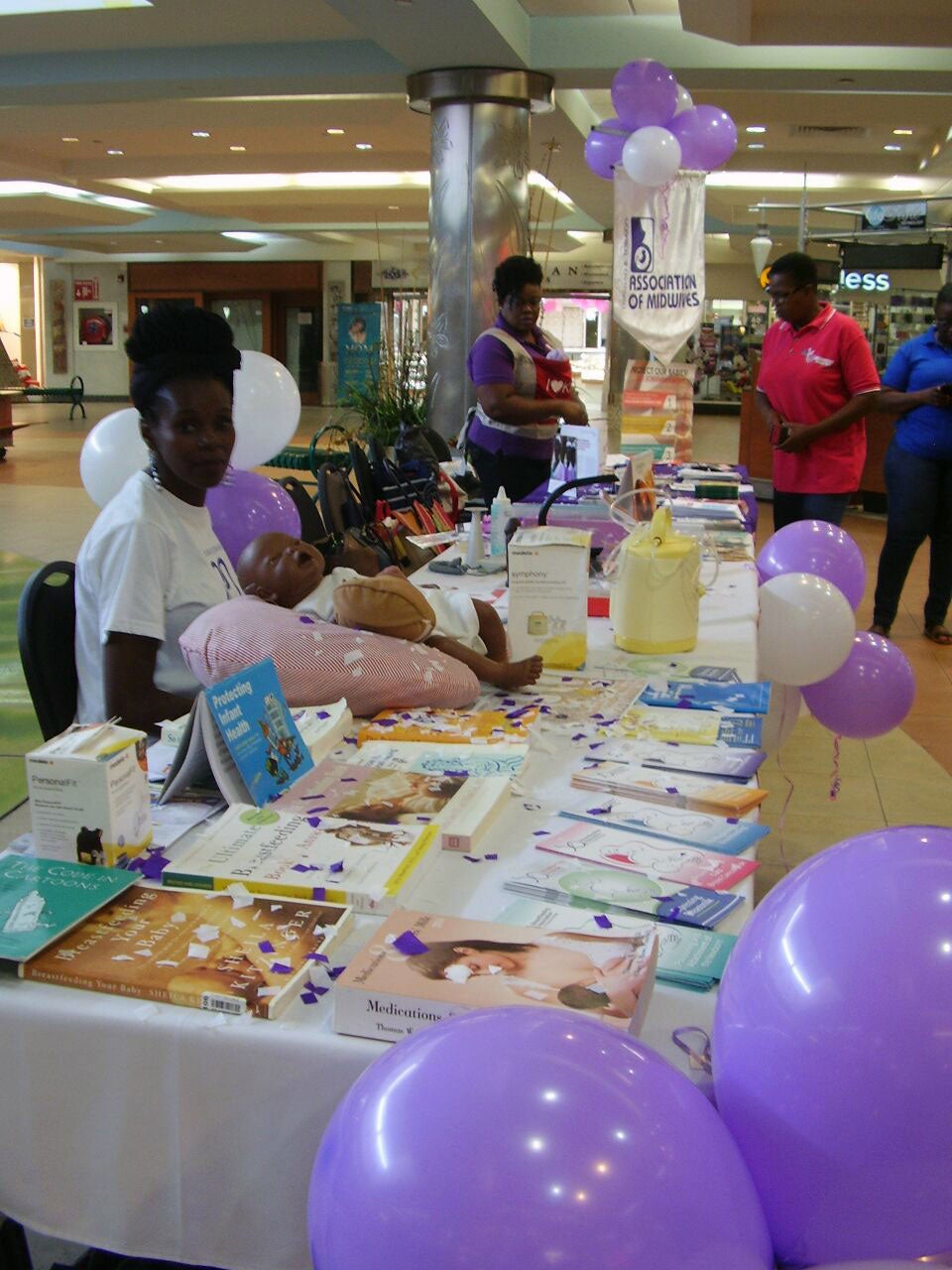Montevideo, May 5, 2022- (CLAP/PAHO) – In a maternity hospital in the middle of the world, where the planet gets divided into two hemispheres, midwife Julia Coello puts humanized childbirth care at the center of the agenda.
Julia is one of nine midwives at the Alberto Correa Hospital in Yaruquí, Ecuador, a second-tier hospital that is implementing a strategy to improve maternal health. especially including midwives.
After studying and working for eight years in Buenos Aires and 15 in Barcelona, she went back home under a government plan that recruited people that had lived abroad, inviting them to contribute by bringing to the country what they had learned abroad. This Ecuadorian midwife states that “strengthening human talent is paramount, if we want to achieve a more humanized care”.
Keeping midwives up to date is also advocated by Kathyann Thomas Elbourne, General Manager, Nursing for the Southwest region in Trinidad and Tobago. Kathyann no longer practices as a midwife, but she lost count of the number of births she attended during a career that spanned over nearly three decades.
With nearly 2,000 professionals (a mix of midwives, nursing assistants and nurse managers) under her charge, she is now working in advocacy and policy development for midwifery improvement. She works to strengthen knowledge-based policies that improve the practice of midwifery, as promoted by the International Confederation of Midwives, the Pan American Health Organization (PAHO), the Latin American Center for Perinatology and Women's Health (CLAP) and the United Nations Population Fund (UNFPA), partners that provide good practices and evidence-based guidelines.
“Our aim is to bring practices such as the promotion of respectful maternity care, support for newborn nurturing and the encouragement of breastfeeding into the mainstream,” she says and she adds “we are working to have our hospital accredited under the Baby-Friendly Hospital Initiative”.
Shortage of professionals
It is estimated that there are 160,000 midwives like Julia and Kathyann in Latin America and the Caribbean. Midwives serve several roles, not only at childbirth, but also in antenatal control and postpartum care, as well as in the field of sexual and reproductive health. Research on the matter indicates that there is a shortage of these professionals, and that by 2035, a substantial expansion of the coverage of interventions by midwives (a 25% increase every five years) could prevent 40% of maternal and neonatal deaths and 26% of stillbirths (the death of a fetus after 20 weeks of pregnancy).” according to The State of the World’s Midwifery 2021. That same report notes that universal coverage of interventions by midwives might prevent 65 per cent of maternal and neonatal deaths and stillbirths.
“If we want to end preventable maternal and neonatal deaths, we must increase the current number of midwifery professionals by about 70% and guarantee them access to up-to-date, top-quality education,” said Bremen de Mucio, PAHO's regional advisor on maternal health. “Moreover, we need to offer enough clinical fields for them to acquire and maintain the skills they will need to provide quality care, respectful of women's rights and cultural standards,” he added.
CLAP supports and oversees the work of the center of the School of Midwives of the University of Chile, a model in midwifery education in the region and the only PAHO/WHO Spanish-speaking partner center in the Americas. Together with this institution and other partners, CLAP promotes the strengthening of midwifery in Latin America and the Caribbean by providing training for clinical care and competency-based education models, as well as training on the management of health care centers and systems and on public health, to provide midwives with sufficient skills to occupy decision-making positions in health institutions, ministries and other strategic locations.
As a service leader at her hospital, Julia took part in several of the courses offered by PAHO under the Train the Trainers model. “Training is not the only critical ingredient; you need to be patient and take your time to observe. Although (the care of) childbirth has been around for thousands of years, we have a lot to learn, we should do better at watching and be less impatient,“ she reflects.
The strategy that was implemented in Yaruqui, an Ecuadorian health care center, aims at articulating the first and second level of care. Pregnant women go from primary care to the most specialized hospital once they reach week 35. They schedule their last antenatal appointments through an online system, attend childbirth workshops and receive training on the flow of care to ensure institutional childbirth.
Also, and as part of this strategy, at the center they work on the coordination of tasks between midwives and obstetricians; they have made improvements in the delivery room, and promoted antenatal care at the first level of care to prevent any complications, and to help women choose the contraceptive method they wish, if they wish so. They also provide postpartum home follow-up visits.
For this midwife, success also lies in getting women to learn what happens to them, “that they empower themselves about childbirth”. Julia feels happy with the work she has done and with her profession. “If I were born again, I would be a midwife,” she says.
The same calling is observed in Kathyann, as she remembers that she took to midwifery out of curiosity. During her career she realized that while “you're not that woman that is bringing someone else into the world; you're the one watching the whole process and aiding when needed. You witness a wonderful process. And with the passage of time you meet people on the street who say to you, 'Do you see this boy or this girl? You helped them at birth.' And that is extraordinary.”



